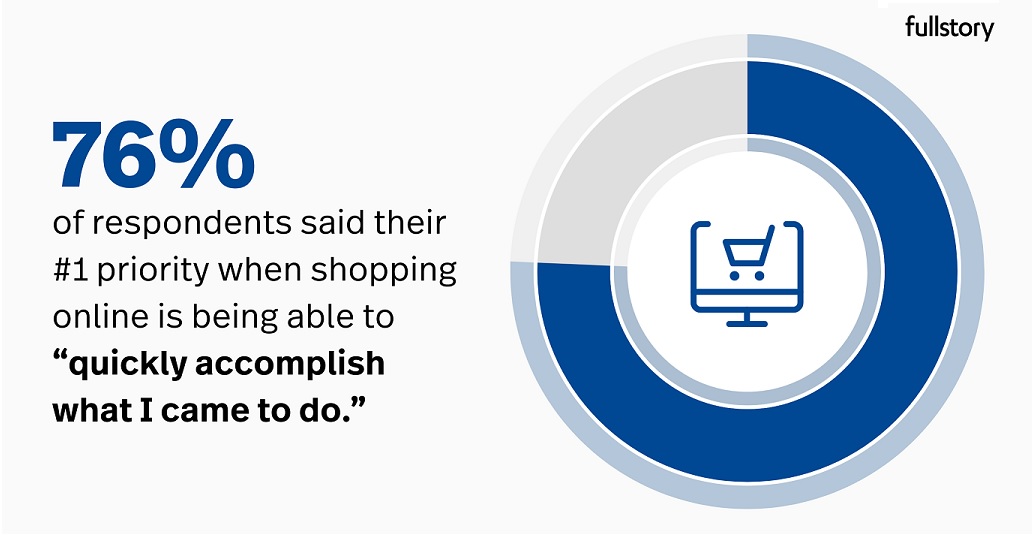When it comes to digital transactions, Americans are loyal to the experience, not necessarily the brand, according to a survey of more than 7,000 consumers from across the US, Europe, and Asia Pacific commissioned by FullStory.
This research reveals that 40% of US consumers say they don't care where they buy from "as long as it works," making a great digital experience more important than ever for brands to remain competitive in uncertain economic times.
58% of Americans will pay a premium for a guaranteed flawless digital experience
The research also shows that even in a price-sensitive environment, the customer experience can have a direct impact on revenue: nearly six out of 10 of Americans (58%) will pay a premium for a guaranteed flawless digital experience. The demand is not exclusive to the US, with 59% of consumers worldwide stating the same.
The research also indicates that consumers' difficulty and stress on sites and apps pose a significant revenue risk for brands. More than half of respondents (53%) are unlikely to return to a business that provides a poor digital experience, and only 5% say they are "very likely" to give a brand a second chance after a bad online experience.
"Companies across sectors are looking for strategies to stand out and retain customers in the face of economic slowdown," said Scott Voigt, CEO of FullStory. "Providing an exceptional digital experience is one of the best ways to win customers, who are clearly open to switching brands and won't tolerate digital friction. Digital experience data and insights equip brands to create perfect digital experiences, making it easier for consumers to get things done online and helping businesses increase revenue and retention."
Keep It Simple
The data shows that the #1 factor to ensure a great digital experience in 2023 is the ability to "quickly accomplish what I came to do" — a priority for 81% of US consumers and 76% of consumers worldwide.

Unfortunately, many sectors are still failing to hit these fundamentals when it comes to the experiences they provide on sites and apps:
■ Healthcare — Only 31% describe the digital experience as "simple," with 27% saying the experience is "stressful" or "difficult."
■ Grocery — Only 33% describe the digital experience as "simple," with 16% saying the experience is "stressful" or "difficult."
■ Finance — Only 37% describe the digital experience as "simple," with 19% saying the experience is "stressful" or "difficult."
■ Retail — Online shopping sites fared the best, with nearly half of US consumers (46%) describing the digital experience as "simple," and 17% saying the experience is "stressful" or "difficult."
Focus on Digital Fundamentals
The study also shows that brands are failing to pay attention to the digital details that matter most to experience-obsessed consumers — and hurting their business as a result.
■ The majority of US consumers (53%) have struggled or been frustrated with a site or app in the past six months, and 64% say they're likely to leave without completing a transaction as a result.
■ 71% of Americans report that they have repeatedly clicked or tapped in frustration on a site or app.
■ The most common frustrations highlighted by US consumers include slow loading times (65%), page loading errors (62%), and dead links (45%).
■ Despite these issues, more than half (51%) will not report issues when they occur, meaning brands are often unaware of digital errors that are costing them revenue.
Global Consumers Reflect Same Attitudes
Comparable to US consumers, more than a third of Brits (38%) also say they "don’t care" where they buy from "as long as it works." Similarly, 46% in Australia and 48% of those in Germany say the same.
Methodology: FullStory's research was conducted by 3Gem, an independent research agency. It incorporates data from 7,000 consumers across the UK, US, Germany, The Netherlands, Australia, Singapore, and Indonesia. Research was conducted between December 2022 and January 2023.
